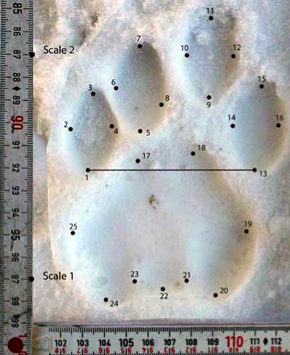Studying animal behavior in the wild usually starts with figuring out just where the wild animals are hiding. Field biologists can use a combination of methods—radio collars, aerial surveys, and camera traps—to remotely monitor animal movement. However, to an expert eye, a well-preserved footprint can also reveal a surprising amount about an animal—its species, gender, age, even its individual identity.

The trick is being able to do that accurately and quickly. Over the last decade, WildTrack, an organization founded by zoologist and veterinarian Zoe Jewell and her husband, Sky Alibhai, has been developing image processing software to detect physical footprint characteristics that are hard for an untrained eye to recognize. The organization’s software is being used to track a variety of animals in different habitats, including Amur tigers in Russia, tapir in South America, and polar bears in the Canadian province of Nunavut.
Jewell and Alibhai call their method footprint identification technique, or FIT. Professional trackers photograph footprints (with a ruler for scale) and add GPS coӧrdinates. The footprints are then loaded into software that allows WildTrack to match them to a large number of known footprints from captive animals of the same species. Algorithms compare elements of the photographed footprint against those in a database of animals whose age and gender are known.
Don’t settle for half the story.
Get paywall-free access to technology news for the here and now.